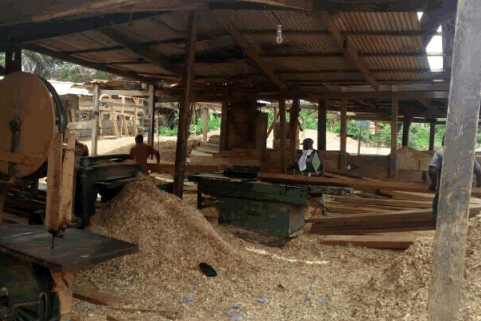The dangers associated with occupational exposure to wood dust
 Exposure to wood dust may cause external and internal health problems.
Exposure to wood dust may cause external and internal health problems.
Adverse health effects associated with wood dust exposure may include dermatitis, allergic respiratory effects, mucosal and non-allergic respiratory effects and cancer.
Industries that have a high risk of wood dust exposure include sawmills, dimension mills, furniture industries, cabinet makers and carpenters
The chemicals in wood that are associated with allergic reactions are generally found in the inner parts or heartwood of the tree.
A hypersensitivity reaction leading to asthma has been reported as a result of exposure to commonly used woods, including Western Red Cedar, Cedar of Lebanon, Oak, Mahogany and Redwood.
It was against this health implications of exposure to wood dust that the American Conference of Governmental Industrial Hygienists (ACGIH) recommended a limit exposure of 1mg/m3 for hardwood and 5mg/m3 for soft wood.
Sadly, Ghana as a nation does not have a comprehensive policy on occupational health and safety as well as a national agency to govern occupational health and safety.
As a result, the safety of workers especially in industries are not guaranteed as many of them are forced to work without protective gadgets such as nose mask, safety goggle, overall garment and safety boots.
An Industrial tour conducted by Health and safety Ghana (HESAG),an occupational health and safety think tank in the Central, Western and Greater Accra Regions of Ghana in 2016, found that most of the wood industries did not provide safety or protective wears to mitigate workers exposure to the wood dust as international health and safety standards stipulated.
Workers who are exposed to wood dust must understand the potential health effects of such exposure and take precautions to reduce their effect.
Health Implications
Wood dust, when it comes in direct contact with the skin can cause dermatitis. It is a condition in which the skin becomes red, itchy, or dry, and may develop blisters.
The main population of workers who suffer from dermatitis-related problems are those who work in secondary wood product manufacturing facilities, although some cases have been reported in sawmill workers.
With repeated exposures, a worker could become sensitised to the dust and develop allergic dermatitis and once a worker becomes sensitised, exposure to small amounts of dust can cause a reaction that becomes more severe with repeated exposures.
The International Agency for Research on Cancer (IARC) has stated categorically that wood dusts is carcinogenic to humans.
A study done in the 1960’s also observed that a large number of furniture workers and other workers exposed to wood dust in England developed a rare form of nasal cancer.
Since that time, many additional studies have shown that workers employed in logging, sawmills, furniture and cabinet making, as well as carpentry were at a high risk of developing nasal cancer.
Many hardwoods and softwoods are believed to contain chemicals that could irritate the eyes, nose and throat, causing shortness of breath, dryness and soreness of the throat, sneezing, tearing and conjunctivitis. Other observed effects included nose bleeding and impaired sense of smell, and complete nasal blockage.
Respiratory system effects due to wood dust exposure include decreased lung capacity and allergic reactions in the lungs.
Decreased lung capacity is caused by mechanical or chemical irritation of lung tissue by the dust.
This irritation causes the airways to narrow, reducing the volume of air taken into the lungs and producing breathlessness.
It usually takes a long time to see a reduction in lung capacity.
Hypersensitivity pneumonitis appears to be triggered when small particles penetrate deeply into the lungs where they trigger an allergic response.
Particles that are known or suspected to cause this condition include moulds, bacteria, and the fine dust from some tropical hardwoods.
Doctors have said that, the initial effects could develop within hours or after a number of days following exposure and are often confused with flu or cold symptoms.
Tightness of the chest and breathlessness often occur with exposure over a long period of time, and this can cause permanent damage to the lungs.
The walls of the air sacs thicken and stiffen, making breathing difficult.
Controlling Measures
As the World marks “World Day for Safety and Health at work” to campaign for safe, healthy and decency at the work place on April 28, it was imperative to carefully access the dangers associated with wood dust exposure for the necessary mitigation measures to be put in place to control wood dust exposure especially at sawmills.
Exposure to wood dust can be controlled through the use of appropriately designed ventilation systems.
Local exhaust ventilation should be designed and maintained to prevent the accumulation of wood dust and the recirculating of wood dust into the workplace.
Also, respiratory protections like the wearing of protective gadgets, nose mask, safety goggle, overall garment and safety boots should be encouraged at the workplace.
Above all, an occupational health and safety standards must be created for the industries to protect workers from dust levels deemed unsafe to help safeguard their health against dust generated diseases.
By Afedzi Abdullah
Source: GNA
